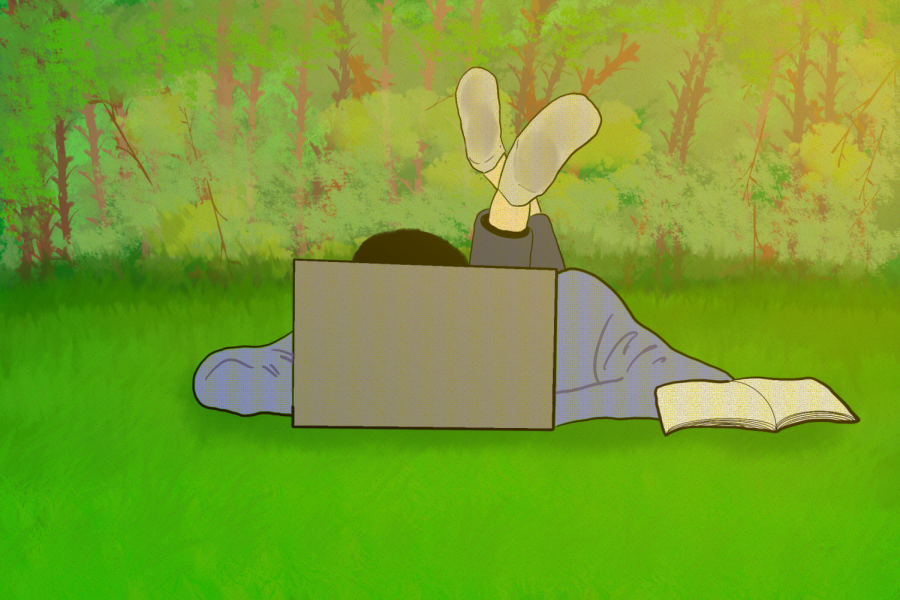Consider studying outdoors
January 23, 2023
With the cooler weather and longer nights of mid-winter, it’s been harder and harder to go outside. Being wrapped up in a blanket in the dorms sounds much cozier than braving the cold for a few hours of sun– but students may want to risk it.
UT is equipped with many outdoor resources, like hammocks outside the Student Activity Center or benches and desks sprawled across campus. However, the most pertinent nature-based activity hub that UT has to offer is NatureRx — an interactive online map that outlines 24 walking routes and outdoor study spots. Students should take advantage of these resources as often as possible in the coming months.
Increased exposure to sunlight has ample benefits for physical and mental wellness. Primarily, consistent sun exposure supplements one’s vitamin D, which, unlike most vitamins, can be absorbed through the skin. In addition, research suggests that being out in the sun can help to ward off anxiety and improve the quality of rest, especially necessary for sleep-deprived and stressed-out college students. Spending time outdoors is an easy way to ensure your body is getting its supply of Vitamin D.
James Butler, the mindfulness campus coordinator of the Longhorn Wellness Center, described the benefits of being under the sun for 120 minutes weekly.
“People were substantially more likely to report good health and psychological well-being than those who don’t spend 120 minutes,” Butler said.
As the weather reaches a cold of intolerable proportions, people tend to stay inside, lowering their vitamin D intake. Although it might be difficult, it’s essential to go outside as frequently as possible to make up for the lack of sunshine exposure.
One of the best ways to incorporate sunlight into a daily schedule is to study outdoors. Many students’ free time is dedicated to reviewing class material, so moving outside for homework is an easy, time-efficient way to boost vitamin D intake.
Kishlaya Rastogi, a government freshman, explains that his usual study spots aren’t outdoors.
“When it was a little warmer, I would study in (the Robert L. Patton building), but not very often,” Rastogi said. “I honestly don’t get that much vitamin D; unfortunately, all I get is when I’m like walking to and from classes or clubs because like that’s the only time I’m really outside.”
Rastogi has noticed that he is less tired and more focused when studying outdoors. However, some struggles come with using outdoor resources — even under the right weather circumstances.
“The longer I’m studying inside, the more present the environment around me becomes and I start to lose focus faster,” Rastogi said.
“In my opinion, the Wi-Fi is considerably worse outdoors, especially on a laptop.It’s pretty hard to get any work done enough to really stop what I’m doing and reconnect to the Wi-Fi.”
Lackluster Wi-Fi should not stop students from taking their schoolwork outside. The most foolproof way to study outdoors is to review material that does not require internet access, like printing out assigned work or making flashcards– less time behind a screen never hurts.
Students tend to put their mental and physical wellness on the backburner in favor of academic success. However, health and academia don’t have to exist separately from each other. The impact of increased sun exposure is worth the two minutes of extra effort and two gigabytes of storage. By taking advantage of UT’s outdoor resources, students can take full advantage of the subsequent benefits.
Hosseini is an International Relations freshman from Sugar Land, Texas.











